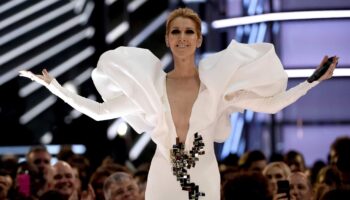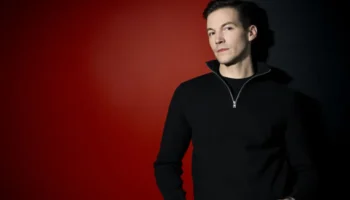With one week to go before the biggest national selection in Europe starts, esctoday.com kicks off the our coverage of Melodifestivalen. First we will start with a series of articles covering the history of Melodifestivalen from when it started back in 1958 until last year seeing Carola winning the contest for the third time. The first article will cover the history 1958 to 1969. Then there will be four more articles covering 1970-1979, 1980-1989, 1990-1999 and the last one 2000-2006.
The first year of Melodifestivalen was very special in fact it wasn't even called Melodifetsivalen at this point and SVT had not been founded either: the company was called SR Sveriges Radio (Swedish Radio). There was no live transmission of the national selection on television nor on radio. Everything was done by SKAP which is the the Swedish Union of Composers of Popular Music or perhaps we should say "Schlagermusic". They called for an internal competition and received 152 entries.
The SKAP jury did a shortlist of 10 songs and presented that to SR. Then SR and SKAP had an internal discussion and selected the song Samma stjärnor lysa för oss två (The Same stars shines for us two) composed by Åke Gerhard. Alice Babs were convinced to represent Sweden at the Eurovision Song Contest, but she demanded that the lyrics had to be changed otherwise she would not do it. A new lyric was composed by SR employee Gunnar Wersén. At the Eurovision Alice Babs sang "Lilla Stjärna" and came 4th. This changed of lyrics made Åke Gerhard furious and forbid Alice to record the song. 36 years later a live version from Hilversum was recorded and that is the only recording of this song that exists.
In 1959 SR decided on a big live show called "Säg det med musik" (Say it with music) to select their entry. Eight semi-finals were held each with two songs. The semi-finals were transmitted on radio only and the listeners voted by postcard. The winner of each semi-final went to Cirkus and the grand finale. Siw Malmkvist won big with 105 (out of a possible 120) points. Siw Malmkvist was not allowed to sing the song at the Eurovision in Cannes, since SR had already decided that Britta Borg should represent Sweden this year with the song Augustin. This year the Swedish national selection was also transmitted in Denmark and the Danish newspapers had a great time telling everyone how bad and ridiculous the show had been.
The same procedure was used in 1960 but this time the radio listeners was replaced by a secret jury of 3 men at SR who chose what 8 songs should qualify to the televised semi-final, where the 8 songs became 4 songs. The show was now called "Eurovisionsschlagern" (The Eurovision Schlager). In the big final at Cirkus the 4 selected songs were performed twice, once with an artist to an large orchestra and once with another artist to a small orchestra, then a third artist performed the song at the Eurovision Song Contest. And the winner was Östen Warnebring with the song Alla andra får varandra but this year SR had decided that Siw Malmkvist should represent Sweden in London.
This system was then used both in 1961 and 1962 with some smaller changes. In 1961 and 1962 no semi-finals were held. In 1961 the number of songs became 5 instead of 4. In 1962 the jury was replaced by the people again that got one week to vote by postcard and decide who should go on and defend the Swedes at the Eurovision Song Contest. In 1961 Siw Malmkvist won again, this time with April April but again she was replaced by another artist. Lill-Babs was chosen to sing the song at the Eurovision. The reason for this was that the critics thought that Siw had performed the song in a silly way and also forgot some of the lyrics and therefore was replaced. In 1962 Inger Berggren won with Sol och vår and for the first time the actual winner was sent to the Eurovision Song Contest.
In 1963 the people were once again replaced by a jury, this time of 12 men. 810 songs had been sent in to the open competition 6 of those were chosen to compete. In addition, 6 of the most successful composers of the previous year were invited and this made up 12 songs competing. Monica Zetterlund won with En gång i Stockholm her performance is generally seen as one of the best ever done in a Swedish national selection. The show it self was a marathon since all 12 songs were performed twice. Monica went to London and achieved Sweden's so far only Nil Points.v
In 1964 there was no national selection and no Swedish participant at the Eurovision Song Contest due to a 6 month long strike amongst Swedish artists.
1965 meant back in business, and Sweden wanted to secure its first victory in the Contest by calling home on of the country's most famous opera singers, Ingvar Wixell. He sang all 5 songs, a method copied from BBC. The show was now renamed to "Svensk Sångfestival" (Swedish Song Festival). The winning song was Annorstädes vals" At the Eurovision the Swedes did something they heavily had criticised Austria for in 1963, not singing in their own language. So all of a sudden Annorstädes vals became Absent friends. As a result, a new rule was introduced in 1965 which said that all songs in the Swedish national selection had to be sung in the native language of the country.
In 1966 a modified version of "Svensk Sångfestival" was used. SR skipped the BBC format with on artist singing all songs. 10 songs took part and the winner was Nygammal vals performed by Svante Thuresson & Lill Lindfors. Nobody in Sweden believed that this song would do very well at the Eurovision, but with a 2nd place Sweden achieved its best result so far in the competition. Lill Lindfors was the hostess of the Eurovision in 1985 and Svante Thuresson is singing one of the songs in Melodifestivalen 2007.
With 1967 came a time for changes. First SR renamned it to Melodifestivalen and this is a name still used and has been for 40 years now in 2007. There was an open competition to send in songs, and a total of 1800 songs were received. 10 songs were selected to compete. The winner was Östen Warnebring singing Som en dröm with music composed by Marcus Österdahl and the lyrics by Patrice Hellberg. Marcus Österdahl's son Martin Österdahl is now the head of Melodifestivalen at SVT.
In 1968 SR had already chosen 10 artist that would compete in Melodifestivalen. The public as well as professionals were asked to send in songs, a total of 2233 were received. This was a really hit song festival since many of the songs became huge hits in Sweden. The winner was Claes Göran Hederström who sang Det börjar verka kärlek banne mig, which is today still one of the most popular winners of Melodifestivalen. Claes Göran went to London, but had no chance against Cliff Richard and eventual winner Massiel, but still ended up with a 5th place.
In 1969 there were heavy discussions on whether Sweden would take part at the Eurovision Song Contest in Madrid due to the regime of General Franco. And when Melodifestivalen was held in March it was not still decided if Sweden should take part or not. The procedure was the same as last year and a record of 2402 entries was received. 10 songs were again selected and there was a tie for first place. Tommy Körberg with Judy min vän and Jan Malmsjö with Hej Clown had to sing again and after the re-vote Tommy Körberg was deemed the winner. A young girl also took part this year, her name Anni-Frid Lyngstad and she came 4th with here song "Härlig är vår jord" but as we all knows that she would be back to write Eurovision history a couple of years later as a member of ABBA.



